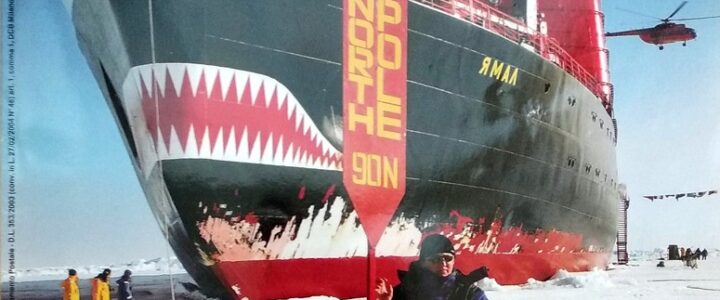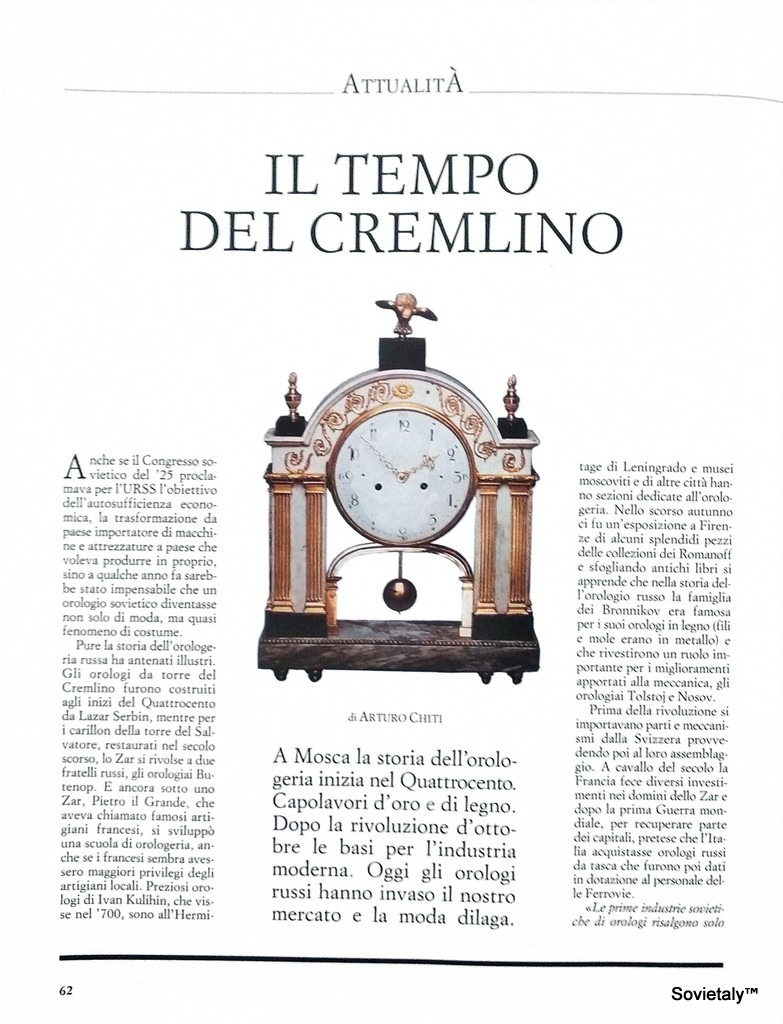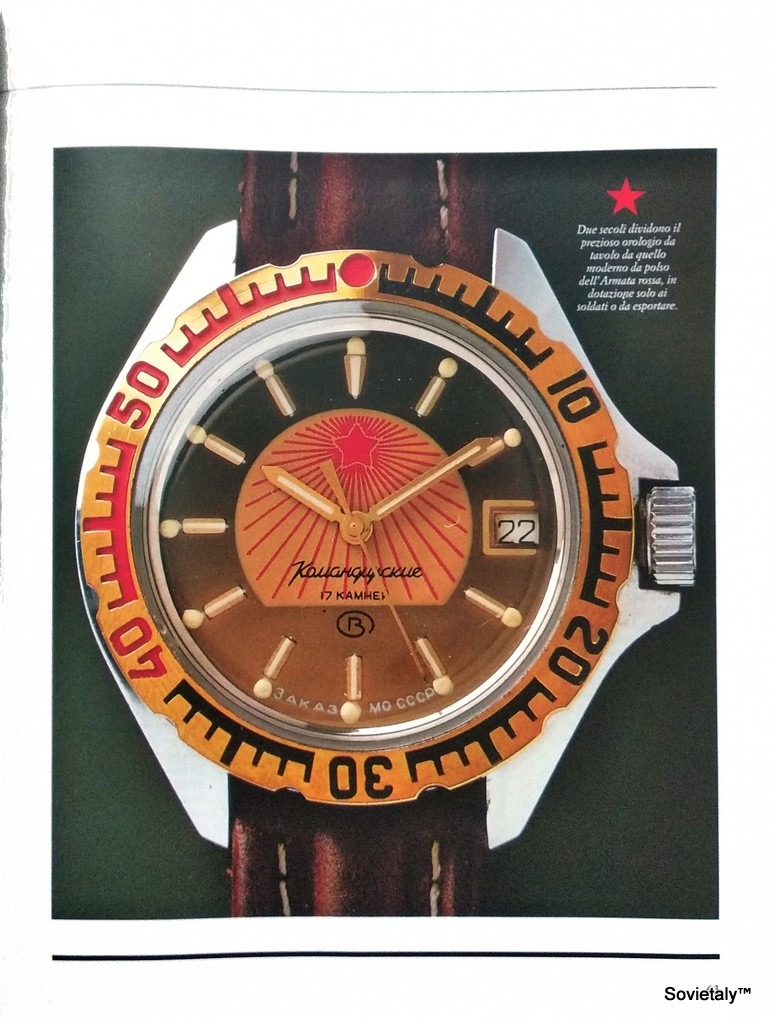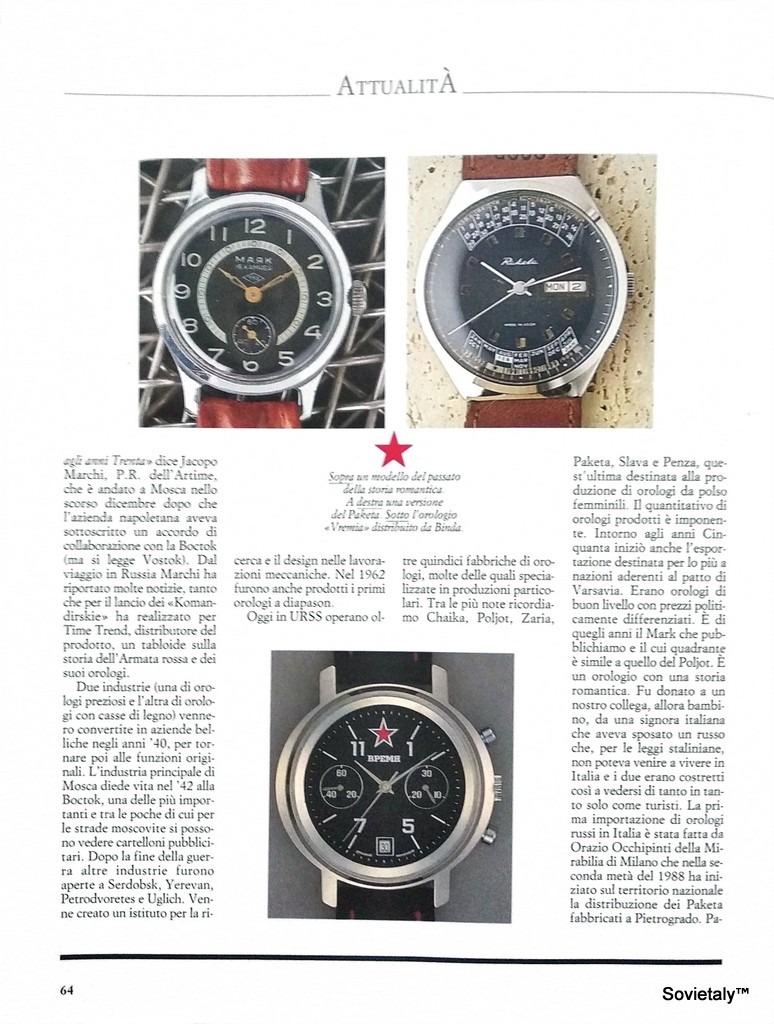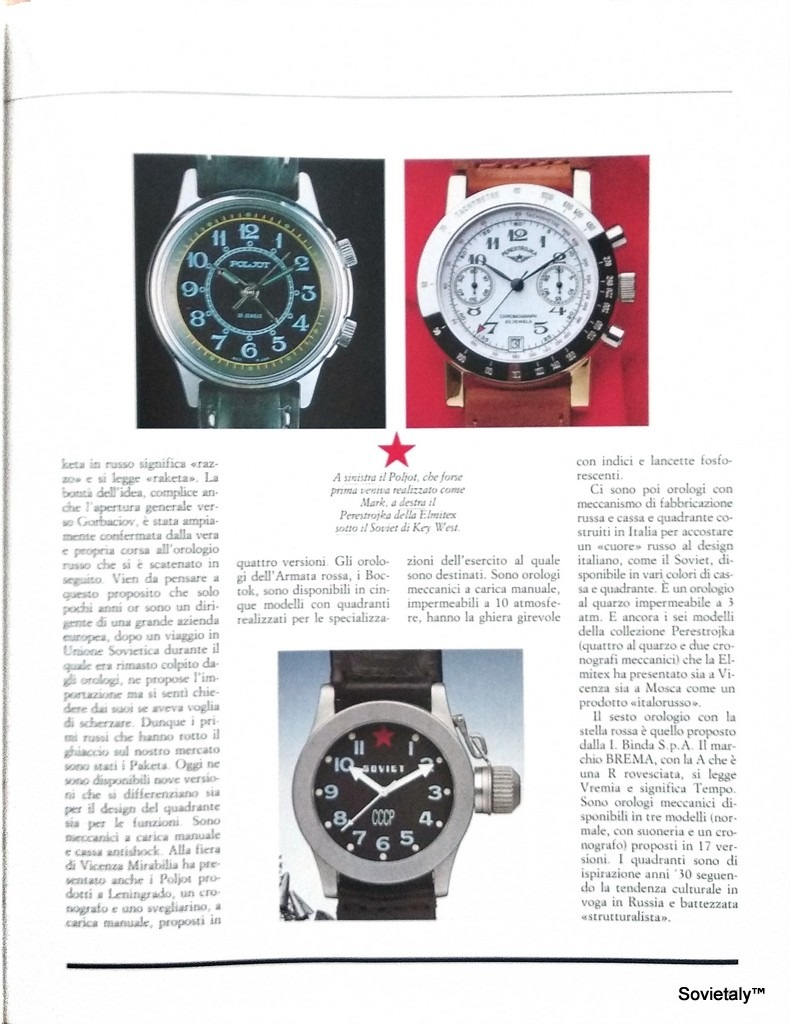[vc_row][vc_column][vc_column_text]
ESCLUSIVO: Al polo Nord con lo Yamal
Una rivista recuperata ad un mercatino qualche mese fa.
Si tratta della rivista “qui TOURING” n° 113 di novembre 2007.
All’interno della rivista è presente un articolo da Jacopo Pasotti ( che ha quindi tutti i diritti su quanto scritto). Il diario di viaggio presente sulla rivista dal titolo “Polo d’attrazione” ha una forte correlazione con gli orologi russi e sovietici.
La Raketa e la Vostok hanno più volte realizzato orologi commemorativi correlati ai rompighiaccio atomici della Atomflot tra cui spicca lo Yamal.
Qui è possibile trovare qualche informazione sui rompighiaccio atomici: https://it.wikipedia.org/wiki/Rompighiaccio_a_propulsione_nucleare
Qui è possibile trovare qualche informazione relativa allo Yamal ( o Jamal): https://en.wikipedia.org/wiki/Yamal_%28icebreaker%29
L’articolo è sostanzialmente un diario di viaggio in cui l’autore descrive l’esperienza relativa al viaggio sul rompighiaccio a propulsione nucleare Yamal.
Ad oggi è ancora possibile effettuare un viaggio turistico sul rompighiaccio a propulsione nucleare Yamal ma la cifra ad oggi si aggira intorno ai 25.000€.[/vc_column_text][vc_separator][vc_column_text]Qui di seguito alcuni esempi di orologi russi e sovietici commemorativi del rompighiaccio a propulsione nucleare Yamal ( o Jamal). Esattamente quello di cui si parla nel diario di viaggio di Pasotti.[/vc_column_text][vc_separator][vc_gallery interval=”3″ images=”18482,18428,18345″ img_size=”large”][/vc_column][/vc_row][vc_row][vc_column][vc_column_text]Qui di seguito la trascrizione dell’articolo e le scannerizzazioni delle pagine della rivista (tutti i diritti intellettuali appartengono chiaramente all’autore, l’articolo viene qui riportato per soli fini informativi):[/vc_column_text][vc_column_text]
ARTICO
Polo d’attrazione
TESTO E FOTO DI JACOPO PASOTTI
Esclusivo: nell’Anno internazionale dei poli, un inviato di Qui Touring raggiunge l’estremo Nord a bordo dell’unico rompighiaccio autorizzato al trasporto dei turisti. Ecco il suo diario di viaggio
Lascio Murmansk e i suoi palazzi grigi per imbarcarmi sullo Yamal, la mia casa per le prossime due settimane. Non c’è rompighiaccio più potente, al mondo. Ma anche il comfort non è da meno
21 luglio
Chi avrebbe detto che il sogno di raggiungere il polo, che per secoli ha sedotto scienziati ed esploratori, sarebbe diventato accessibile a tutti? Incredibile: andrò al polo Nord. E ci andrò con un rompighiaccio nucleare russo.
Sono a Murmansk, il più grande scalo marittimo dell’Artico: qui convergono il gas, il carbone e il petrolio siberiani, che vengono stivatí su possenti navi cisterna e spediti in tutto il mondo. I palazzi della città sono aggrediti dal tempo e mostrano i segni di una costruzione frettolosa, dettata dalla necessità; la città è stata rasa al suolo dall’aviazione tedesca durante la seconda guerra mondiale. In seguito il regime sovietico l’ha ricostruita. “E ha chiamato forza lavoro promettendo uno stipendio doppio”, spiega Katrina, la nostra guida locale. La proposta salariale è più che meritata, vista la durezza dell’ambiente. In inverno il sole non si vede per quasi due mesi.
Quando arriviamo al porto siamo sottoposti a un minuzioso controllo dei passaporti. Il molo a cui sono attraccate tre delle cinque navi nucleari della Compagnia navale di Murmansk è zona militare. È proibito fotografare. Il nostro rompighiaccio, lo Yamal (o Jamal, con una traslitterazione più corretta), è lì, ci attende con le fauci spalancate pitturate sulla chiglia nera e i ponti colorati di rosso. Alla luce di un tramonto che non avviene mai, visto che qui il sole non scenderà sotto l’orizzonte per ancora due settimane, la nave ha un aspetto accogliente. Salgo a bordo. “Quella in fondo al molo è l’Arktika, il primo rompighiaccio ad aver raggiunto il polo” indica Harald, un compagno di viaggio che ha già partecipato a spedizioni di questo tipo. “Sono passati trent’anni dalla sua impresa”.
22 luglio
Superare il circolo Polare artico significa entrare nel mondo del giorno perpetuo. Dormire è una decisione che devo impormi razionalmente: l’istinto mi farebbe attendere il crepuscolo e poi l’oscurità della notte. Così, dopo una cena a base di pesce preparata dai cuochi austriaci, salgo sul ponte di comando. Vorrei dare un ultimo sguardo serale a questo mare, per secoli territorio di pesca di balenieri britannici e olandesi, ma mi scopro ancora sveglio alle tre di notte, il sole alto sull’orizzonte. Gli ufficiali russi controllano la rotta sulla carta nautica distesa su un piano. Il cirillico non facilita la comprensione, ma la forma della penisola di Kola, delle isole Svalbard, dell’arcipelago di Francesco Giuseppe e le linee dei meridiani disegnano profili noti. Insieme agli ufficiali faccio scorrere l’indice sulla carta, dalle coste fino alla meta: il polo Nord geografico, il punto che è sotto la Stella Polare e attraverso cui passano gli oltre dodicimila chilometri di asse di rotazione del nostro pianeta.
23 luglio
Abbiamo appena superato gli 80 gradi di latitudine quando Laurie Dexter, il capo della spedizione, annuncia al microfono: “A ore nove stiamo per incrociare un iceberg!”. La montagna di ghiaccio alla deriva è il primo autentico incontro con l’alto Artico da quando abbiamo lasciato la Russia. In pochi istanti i ponti della nave si riempiono. Siamo tutti in ammirazione del megalitico blocco di ghiaccio celeste.
25 luglio
Cinquecento chilometri dal polo. Ormai siamo totalmente circondati dalla banchisa. La nave avanza a dieci, al massimo quindici nodi, meno di trenta chilometri all’ora. É come se si aprisse la strada a spallate. Ogni tanto rimane incastrata in uno spesso strato di ghiaccio, fa marcia indietro, e poi balza con la prua sulla lastra, sfondandola. Si ode un grande tonfo, la superficie va in pezzi, e si procede tra due muri di ghiaccio azzurro sollevati dallo scafo. A poppa della nave la cicatrice della banchisa si richiude. In un paio di giorni, dicono, scompare traccia della ferita.
A mezzogiorno, l’ingegnere capo mi mostra, da una finestrella schermata, i due reattori nucleari della nave. Due chili di uranio sono sufficienti per frantumare per quindici giorni lastre di ghiaccio grandi come un campo di calcio e spesse tre metri. “Lo Yamal è tra le navi più potenti al mondo” spiega. “Le sue eliche sprigionano una potenza di 75mila cavalli”. Verso sera una nuova sorpresa richiama sul ponte tutti i viaggiatori, capitano compreso. Un orso bianco, per nulla intimorito dal gigante rosso e nero che si avvicina fragorosamente, continua la sua caccia quotidiana. Il capitano ferma la nave. L’orso ci osserva curioso. Anche per lui, si capisce, questo incontro é una sorpresa. Poi si gira, attraversa a nuoto un’apertura nel ghiaccio, e se ne va. Intorno a noi c’è una monotona distesa di ghiaccio, acqua e cielo, dominati dalle sfumature di grigio e dalle delicate tinte di ciano marino.
27 luglio
Mi accorgo di passare ore, e poi giorni, a prua della nave, osservando la distesa irregolare di pozze e laghetti che si aprono sulla banchisa. Quando infine raggiungiamo il polo è come se stessi celebrando un punto qualunque di questo mondo ghiacciato. Non c’è nulla di diverso rispetto alle centinaia di chilometri che abbiamo percorso. Ma il Gps mostra un eloquente 90°00’00” N. Questo è il punto preciso attorno al quale ruota il mappamondo di casa. È il tetto dell’emisfero boreale. Non conta in quale direzione mi volti, il mio sguardo volge sempre a meridione. In fondo, penso, è giusto che il polo Nord abbia un aspetto così dimesso. E un gesto di umiltà planetario.
È solo un punto qualsiasi in una distesa di ghiaccio, il polo Nord. Ma che bello sotto la stella Polare. Girarsi e guardare sempre a sud. E poi, fare il giro del mondo in quattro balzi
Quale futuro per L’Artico?
Chiedere a uno scienziato quale futuro si prospetta per l’Artico significa metterlo in imbarazzo. Non ci sono risposte certe. Anzi gli ultimi due anni di ricerche mostrano che agli scenari ipotizzati, già poco rassicuranti, erano frutto di un ingiustificato ottimismo. I primi rapporti dell Intergovernmental Panel on Climate Change prospettavano un Artico privo di banchisa nel periodo estivo intorno a 2070. Verso il 1996 la cifra è stata corretta al 2050. E l’anno scorso gli scienziati della Agenzia Spaziale europea hanno detto che forse si potrà navigare fino al polo già nel 2035. Le immagini satellitari mostrano che l’estensione del ghiaccio artico si è ridotta di più del 7% in dieci anni. Fatto che attira sempre più le compagnie petrolifere, cui interessano le riserve di idrocarburi: il 25% dei giacimenti mondiali di gas e petrolio si trovrebbe infatti sotto la coltre di ghiaccio. I Paesi circumpolari iniziano ad accampare le loro pretese. Ma la riduzione della banchisa comporta anche il collasso dall’habitat di molti pesci e invertebrati, di cui si cibano uccelli e foche, che sono a loro volta prede di orsi bianchi. Ciò cui assisteremo sarà un aggiustamento della catena alimentare e della distribuzione delle specie.
Incrociamo le isole Francesco giuseppe, ultimo arcipelago a essere stato esplorato. Brevi sprazzi di sole tingono dei colori del crepuscolo la terra e i ghiacciai, persi tra i banchi di nebbia
28 luglio
Con il procedere del viaggio approfondisco la conoscenza con Laurie Dexter. II polo non solo e l’habitat naturale dell’orso bianco, ma anche di questo gentleman canadese. Scozzese di origine, è un personaggio incredibile: ha vissuto una quindicina d’anni in una comunità inuit, imparandone la lingua e il modo di vita; è capace di inseguire e cacciare le foche, nutrendosi del corpo ancora caldo della preda; membro onorario della Royal Geographic Society, tra le sue imprese c’è anche l’attraversamento con gli sci del polo Nord. Novantun giorni nel gelo artico, dalla Siberia, fino al Canada.
29 luglio
Dopo una settimana di navigazione, lo Yamal fa nuovamente rotta verso la terraferma. Ancora due giorni nel ghiaccio e poi incrociamo le isole di Francesco Giuseppe, l’ultimo arcipelago del pianeta a essere stato esplorato. Intorno a questi frammenti di terra persi nel mar Glaciale artico si sono arenate decine di spedizioni, tra il Settecento e i primi del Novecento, incapaci di penetrare nel mondo congelato che sigillava le coste siberiane. II rompighiaccio naviga silenziosamente tra le isole piatte e allungate all’orizzonte. Alcuni sprazzi di sole tingono dei colori del crepuscolo la terra e i ghiacciai, persi tra i banchi di nebbia. “Le isole sono praticamente disabitate”, spiega Laurie. L’arcipelago è coperto da gigantesche calotte glaciali, alcune delle quali raggiungono la costa e liberano iceberg trascinati alla deriva dalle correnti. Le 190 isole sono il rifugio estivo di una quindicina di specie di uccelli che nidificano tra gli anfratti di scogliere basaltiche grigio-nere. “Troveresti più specie di uccelli nel tuo giardino di casa!” dice Laurie ridendo, “la differenza è che queste sono colonie di milioni di individui!”. Sceso a terra a Cape Flora, risalgo il pendio muschioso alla base di una parete verticale da cui arriva lo stridio di una infinità di gazze marine minori, uccelli bianchi e neri di piccole dimensioni, parenti dei più noti pulcinella di mare. Alla fine sono respinto da un gabbiano glauco, che compie su di me picchiate aggressive per difendere il suo nido. Mi siedo. Ascolto l’attivissima colonia di uccelli: è un chiacchiericcio vivace, ricorda il vociare dei bambini nel cortile di un asilo.
2 agosto
Dopo due settimane di navigazione nell’oceano polare il rompighiaccio attracca nuovamente nel porto di Murmansk. E difficile credere di essere stato al polo Nord, dopo anni di sogni e fantasie. Prima di partire era un “altro mondo” remoto e ostile. Ora, grazie allo Yamal, è diventato quasi familiare.
Da sapere
Documenti: passaporto con validità di sei mesi; visto russo.
Clima: anche se il sole non tramonta mai in giugno e luglio al polo Nord fa freddo. Ma non freddissimo: la temperatura si aggira sui -2 gradi centigradi. Se c’è vento, può arrivare a -15.
Arrivare
Non esistono voli diretti pe Murmansk dall’Italia; è necissario passare per Helsinki o San Pietroburgo. Al polo Nord si giunge unicamente con il rompighiaccio russo Yamal
Altre info
La spedizione sullo Yamal è organizzata da Quark Expeditions, società americana specializzata in Artico e Antartide tel. 001.203.6560499;
www.quarkexpeditions.com. Tre le date già programmate per il 2008: 23/6-8/7; 6/-21/7; 19/7-4/8. Costo tutto compreso, con partenza e arrivo a Helsinki, a partire da 16mila euro. tra i tour operator italiani che hanno in catalogo il tour, Antartica – tel. 011.6696581; www.antartica.it – e Kuoni Discovery – tel 010.5968350; www.kuoni.it
[/vc_column_text][/vc_column][/vc_row][vc_row][vc_column][vc_column_text]
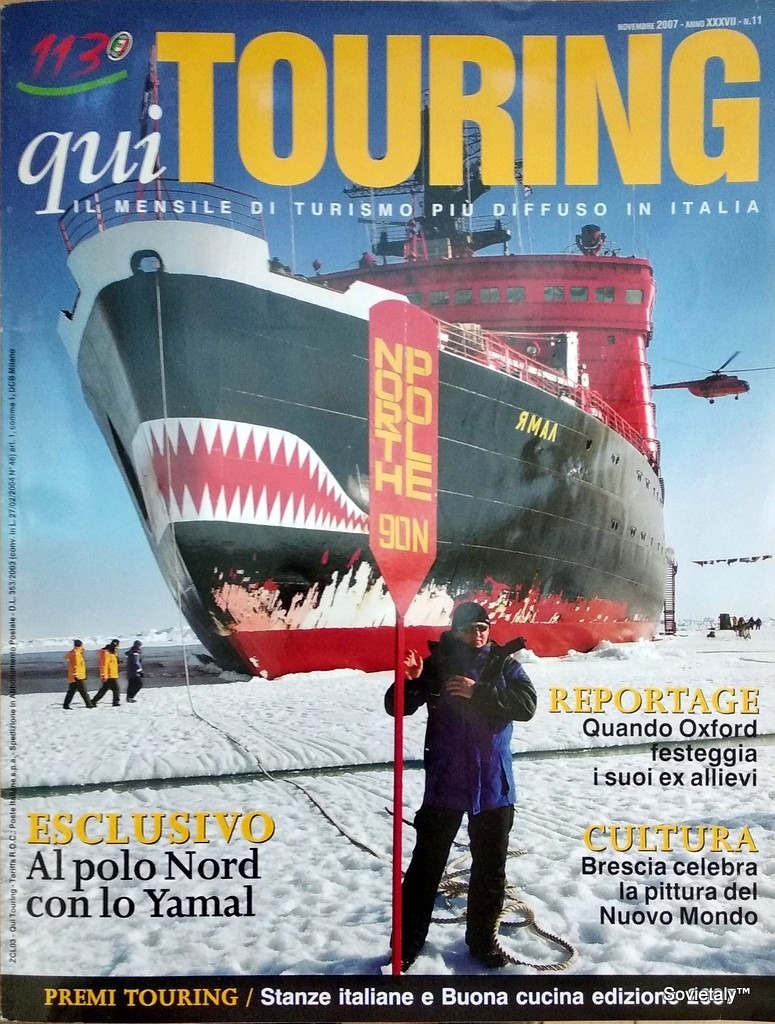
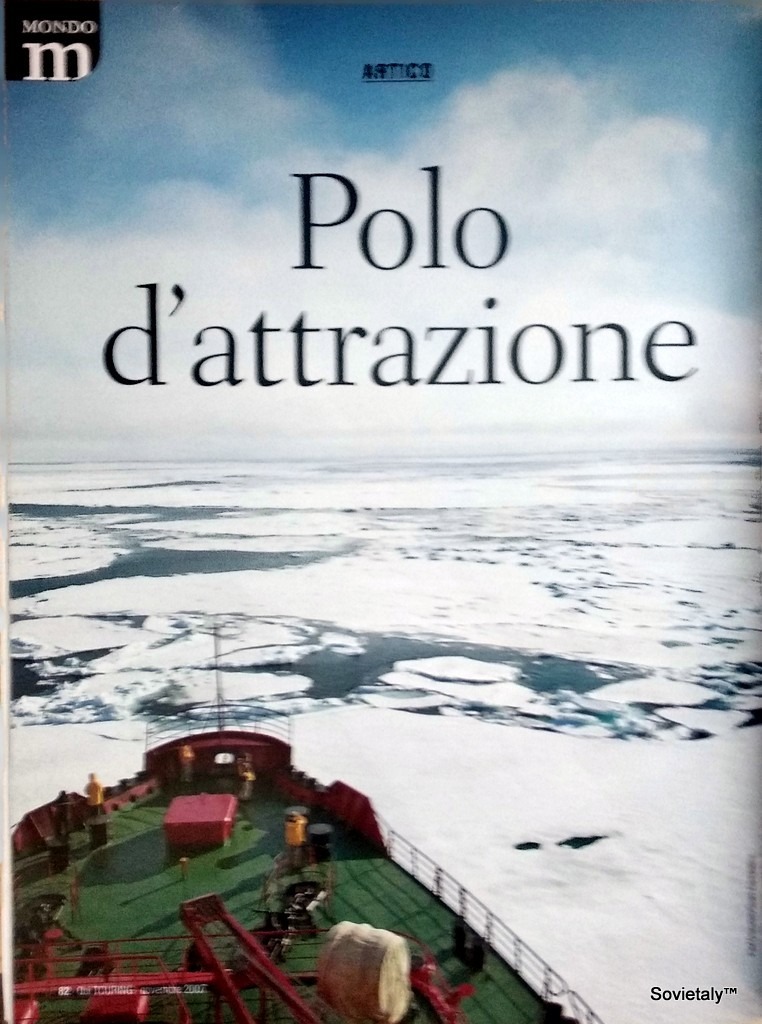
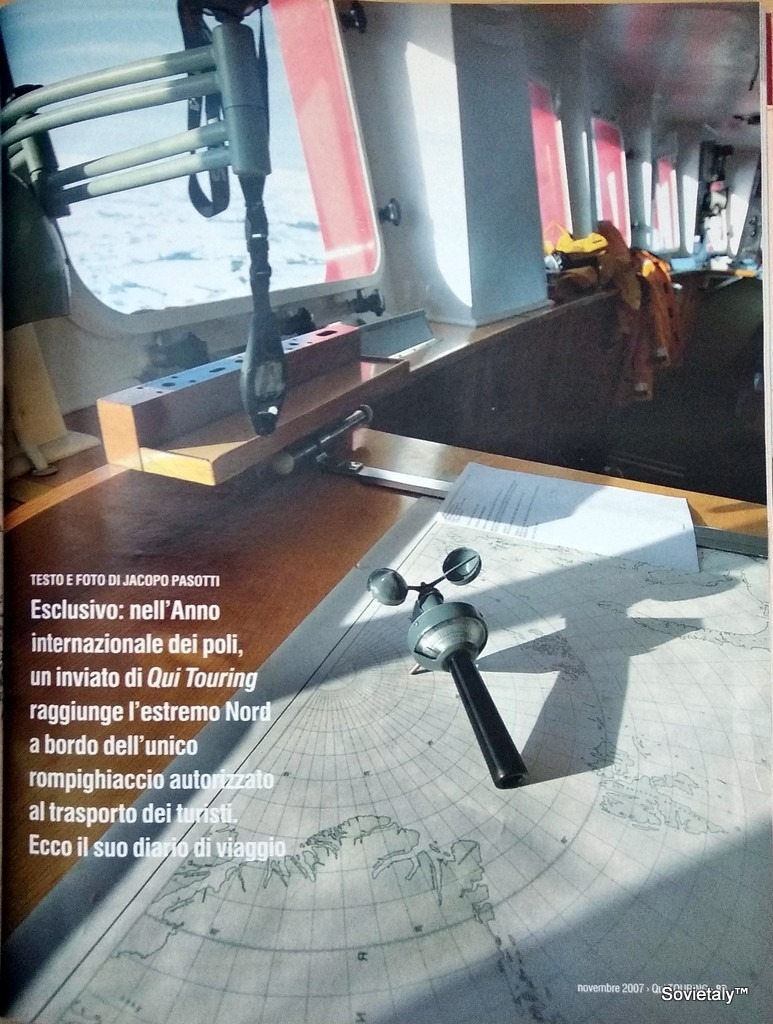
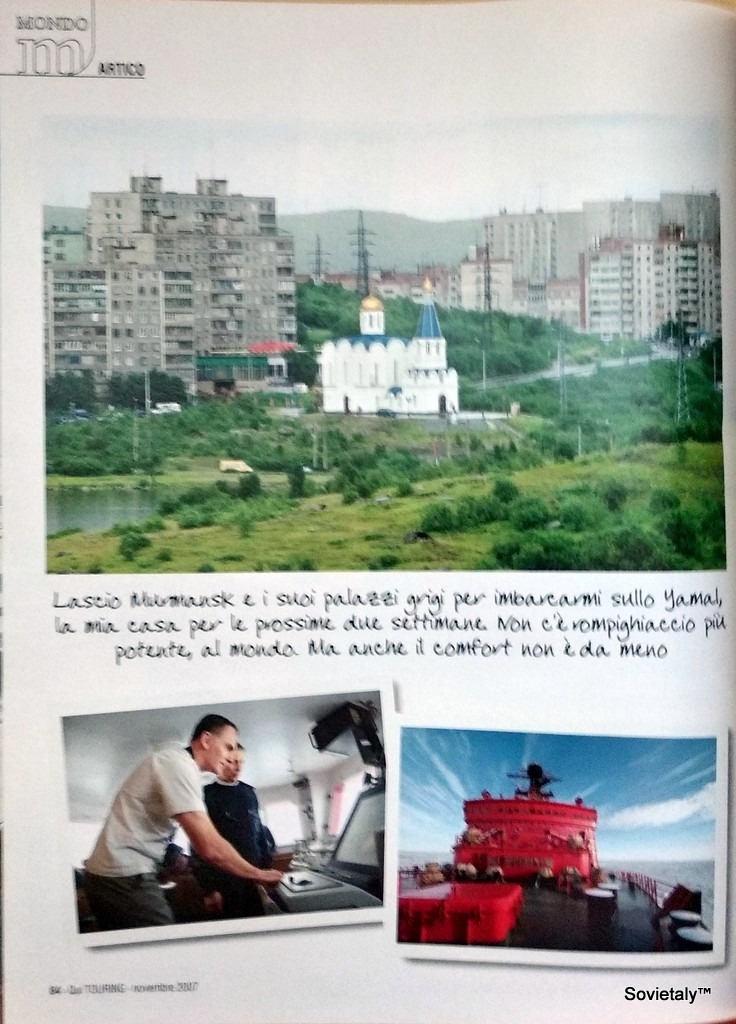
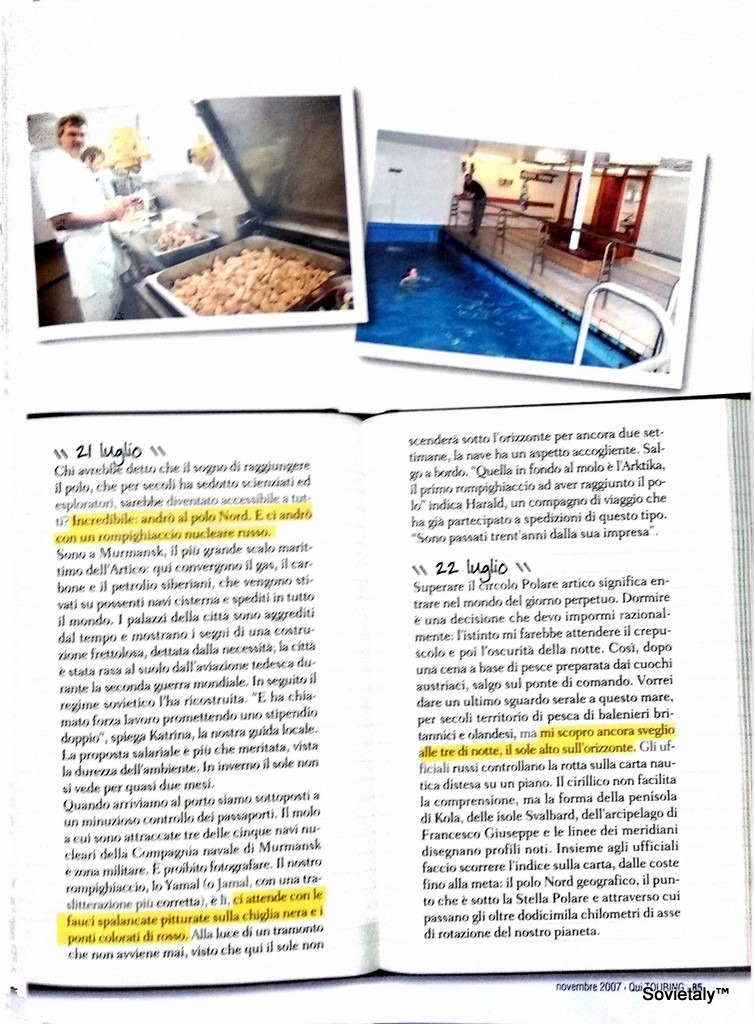
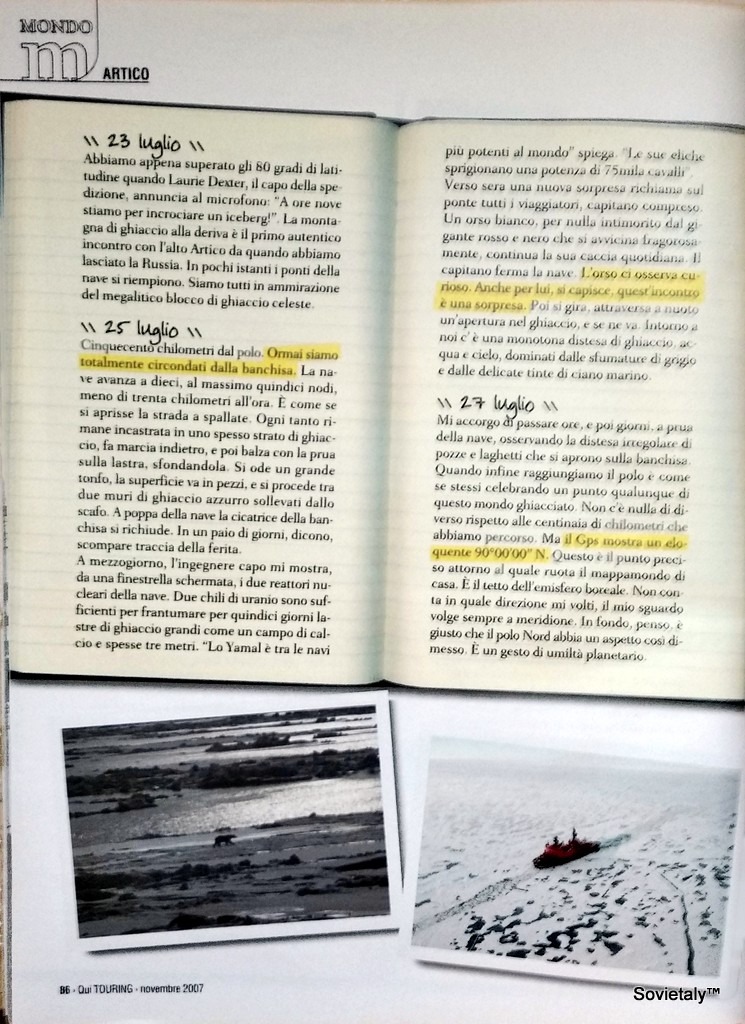
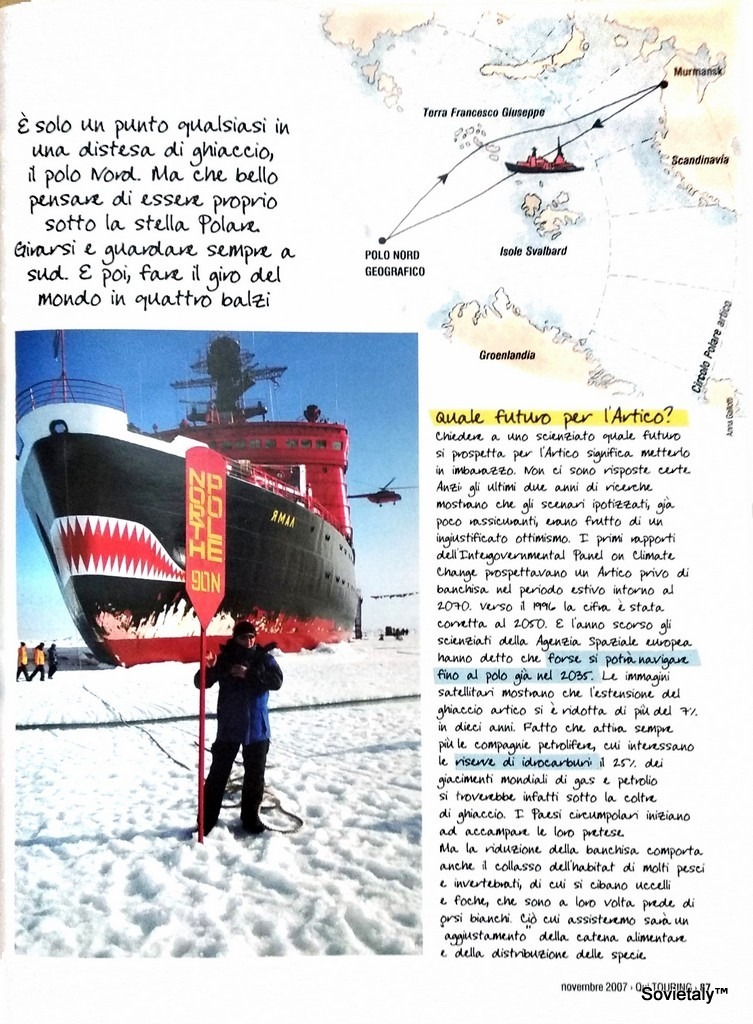
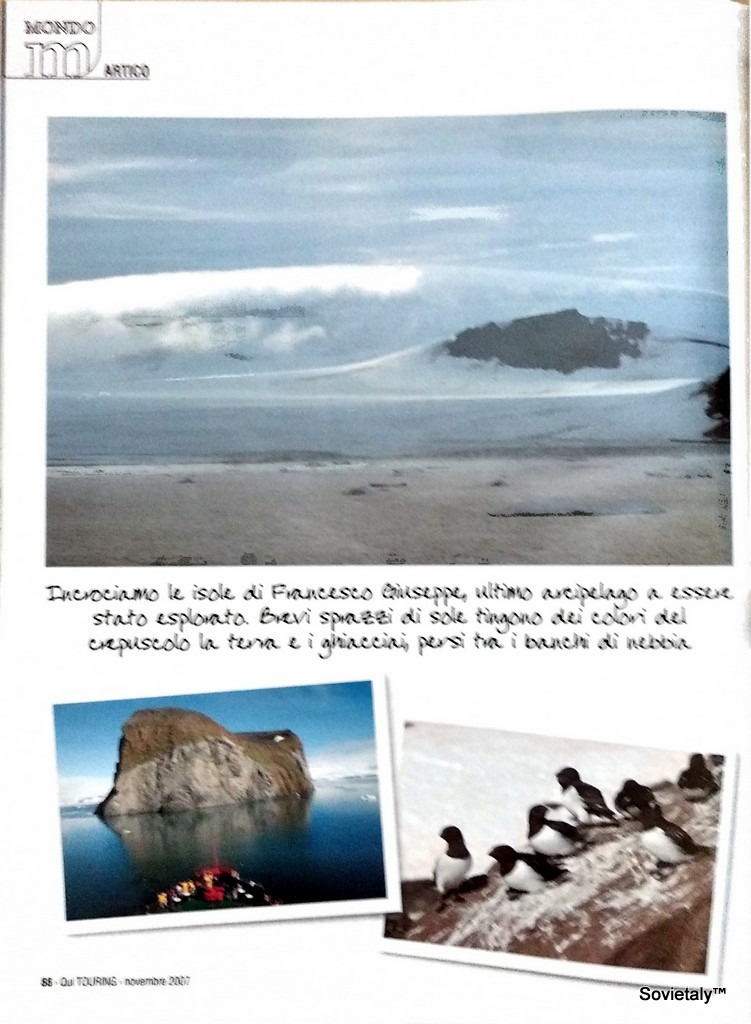
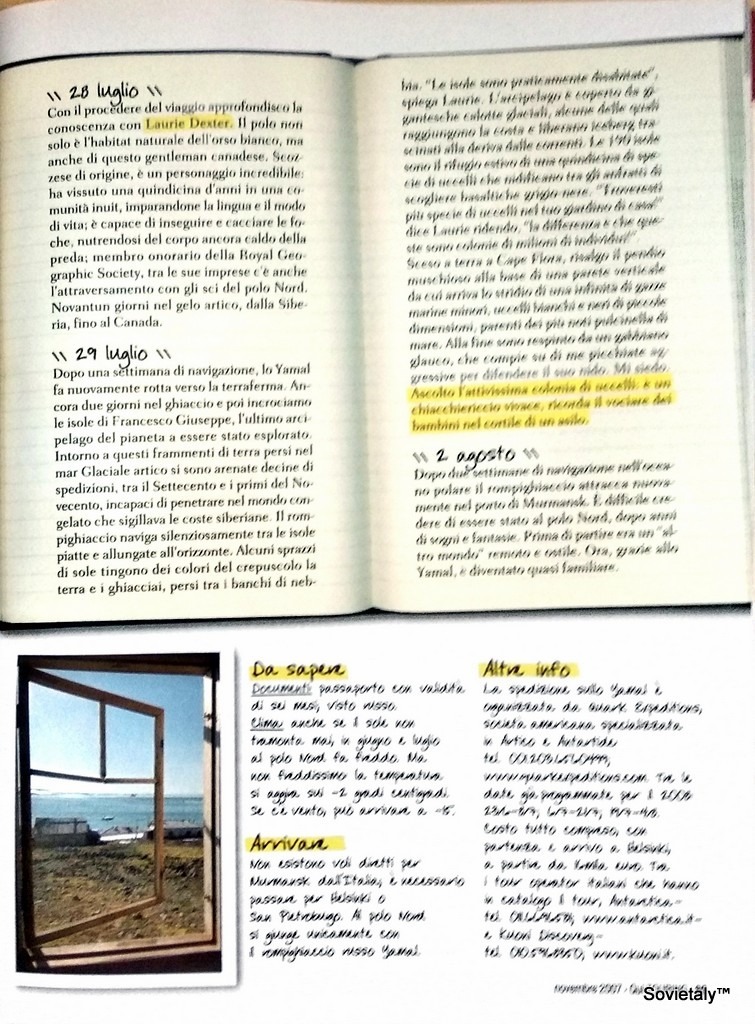
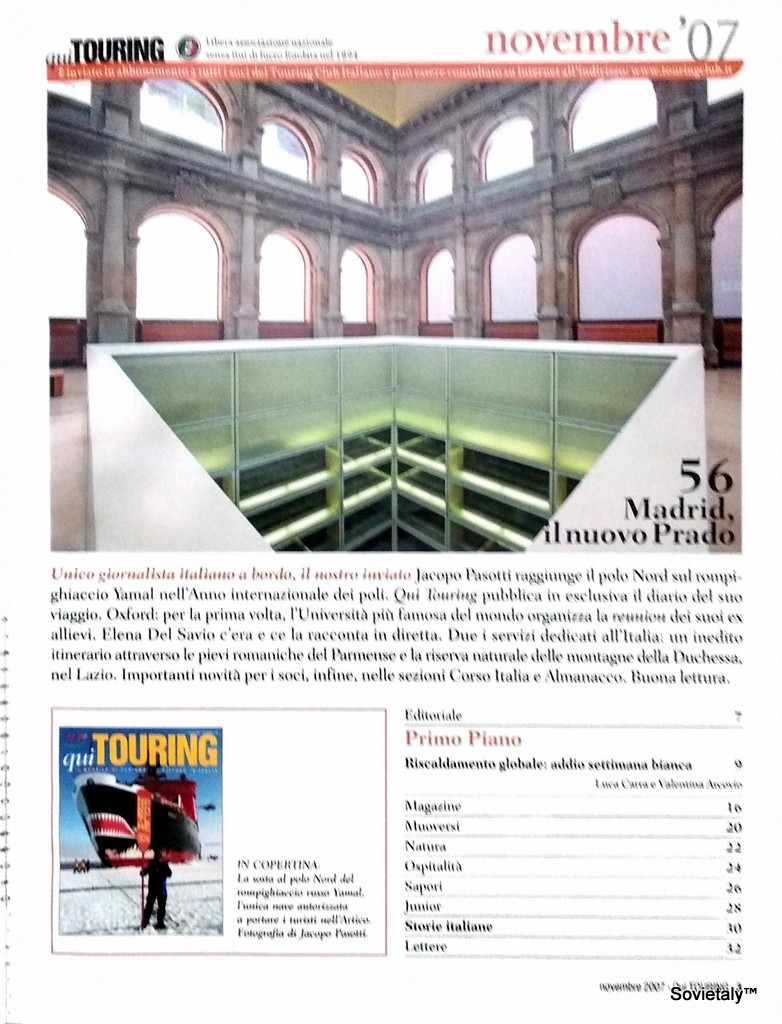
[/vc_column_text][/vc_column][/vc_row][vc_row][vc_column][vc_column_text css=””]
L’avventura artica a bordo del rompighiaccio Yamal
Partenza da Murmansk
21 luglio: Lascio Murmansk, una città dalle strutture grigie e segnate dal tempo, per imbarcarmi sul rompighiaccio nucleare Yamal. Qui, tra il gas, il carbone e il petrolio siberiani, mi attende una nave imponente con la prua dipinta a forma di fauci spalancate. Nonostante il rigore invernale della città, l’atmosfera è vivace e piena di aspettative.
Inizio del viaggio
22 luglio: Superato il Circolo Polare Artico, entriamo nel regno del giorno perpetuo. Dormire diventa una sfida in questo mondo senza crepuscolo. Dopo una cena deliziosa a base di pesce, esploro il ponte di comando. Gli ufficiali russi tracciano la rotta verso il Polo Nord geografico, un punto misterioso sotto la Stella Polare.
Primo incontro con un iceberg
23 luglio: A latitudine 80 gradi nord, Laurie Dexter, il capo della spedizione, annuncia l’avvistamento di un iceberg. Il primo autentico incontro con l’Alto Artico riempie di meraviglia tutti noi passeggeri.
Attraverso la banchisa
25 luglio: A cinquecento chilometri dal Polo, ci troviamo circondati da un’immensa distesa di ghiaccio. La nave avanza con fatica, sfondando lastre di ghiaccio spesse. I due reattori nucleari dello Yamal, alimentati da pochi chili di uranio, ci permettono di navigare attraverso questa barriera ghiacciata. L’apparizione di un orso bianco suscita sorpresa e ammirazione tra noi, mentre il capitano ferma la nave per osservarlo.
Raggiungiamo il Polo Nord
27 luglio: Finalmente raggiungiamo il Polo Nord, un punto indistinguibile nel vasto ghiaccio. Il GPS conferma il raggiungimento del 90°00’00” N, il tetto del mondo boreale. È un momento di riflessione e umiltà, con solo il ghiaccio e il cielo a farci compagnia.
Esplorazione delle isole Francesco Giuseppe
29 luglio: Lo Yamal inizia il viaggio di ritorno, fermandosi presso le isole Francesco Giuseppe. Questo arcipelago disabitato è avvolto da nebbia e ghiacciai, rifugio estivo per diverse specie di uccelli marini. La colonia di gazze marine minori, con il loro chiacchiericcio incessante, anima questa terra remota e selvaggia.
Ritorno a Murmansk
2 agosto: Dopo due settimane, ritorniamo a Murmansk. Il Polo Nord, un tempo luogo di sogni e fantasie, è diventato una realtà tangibile grazie al viaggio a bordo dello Yamal. È stato un viaggio incredibile, un’esperienza che ha trasformato un mondo remoto in qualcosa di quasi familiare.[/vc_column_text][/vc_column][/vc_row]

